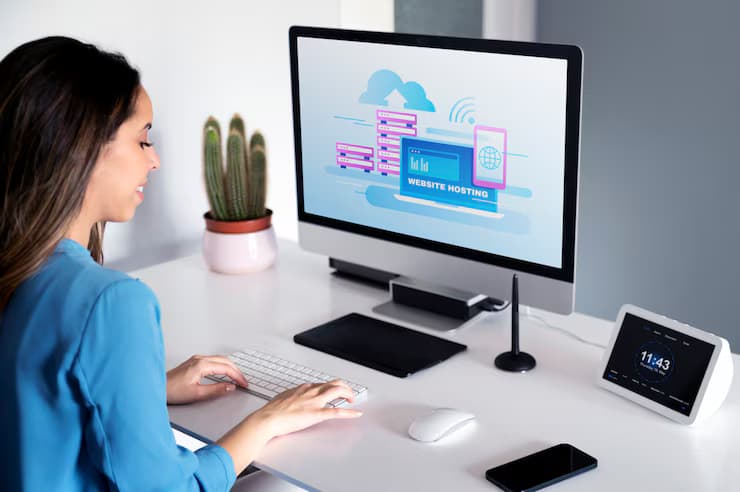What Is VDI Desktop Virtualization and Why Businesses Use It

In the evolving landscape of technology, businesses are continually seeking innovative solutions to enhance efficiency, security, and flexibility. One such solution that has gained significant traction over the years is VDI desktop virtualization. This technology allows organizations to create virtual desktops that can be accessed from various devices, fundamentally transforming how employees interact with their work environments. By understanding what VDI is and the myriad reasons businesses are adopting it, one can appreciate its growing prominence in the corporate world.
Understanding VDI Desktop Virtualization
VDI, or Virtual Desktop Infrastructure, is a technology that enables the hosting of desktop environments on a centralized server. Unlike traditional desktop setups where the operating system and applications are installed on individual machines, VDI allows users to access their desktops remotely from any device with an internet connection. This setup typically involves a hypervisor that manages the virtual machines (VMs) on the server and delivers the desktop experience to end-users.
The fundamental architecture of VDI consists of a server that houses multiple virtual machines, each capable of running its own operating system and applications. Users connect to these virtual machines through various endpoints, whether they are thin clients, laptops, or even tablets. The result is a seamless experience that mirrors a traditional desktop environment but offers the benefits of centralization and manageability.
The deployment of VDI can take various forms, including on-premises solutions where businesses maintain their own servers, or cloud-based options where the infrastructure is hosted by third-party providers. Each approach has its benefits, but the core concept remains the same: providing users with a consistent and flexible desktop experience.
Benefits of VDI Desktop Virtualization
Enhanced Security Measures
One of the primary reasons businesses are gravitating towards VDI desktop virtualization is the enhanced security it offers. In a traditional desktop environment, sensitive data is often stored on individual machines, which can be vulnerable to theft, loss, or unauthorized access. With VDI, data is stored on centralized servers that can be fortified with advanced security protocols. This centralization significantly reduces the risk of data breaches, as sensitive information remains within the secure confines of the data center.
Moreover, VDI allows for better control over user access. Administrators can implement policies that limit access based on user roles, ensuring that only authorized personnel can view or manipulate sensitive data. In addition, if a device is lost or stolen, the virtual desktop can be quickly deactivated, preventing unauthorized access to corporate resources.
Increased Flexibility and Mobility
In today’s fast-paced business environment, flexibility is paramount. Employees increasingly desire the ability to work from anywhere, whether it be from home, a coffee shop, or while traveling. VDI desktop virtualization facilitates this by allowing users to access their virtual desktops from any device with an internet connection. This mobility not only enhances employee satisfaction but also drives productivity, as individuals can work from their preferred locations without the constraints of traditional office setups.
The flexibility of VDI is further exemplified by its scalability. Organizations can easily add or remove virtual desktops based on their current needs, allowing them to respond swiftly to changing business demands. This adaptability is particularly valuable for companies experiencing growth or fluctuating workloads, as it allows them to optimize resource allocation without significant investments in hardware.
Streamlined IT Management
Managing a multitude of physical desktops can be a daunting task for IT departments. Software updates, security patches, and configuration changes often require significant time and resources. VDI simplifies these processes by centralizing management in the data center. Administrators can deploy updates and patches across all virtual desktops simultaneously, ensuring that every user operates on the latest software version without the need for manual intervention.
This centralization not only saves time but also ensures consistency across the organization. Users experience the same environment regardless of the device they use, reducing the chances of compatibility issues and minimizing the need for IT support. Furthermore, troubleshooting becomes more efficient, as IT staff can access virtual desktops remotely to diagnose and resolve issues without needing to be physically present.
Effectiveness
While the initial investment in VDI infrastructure may appear significant, the long-term cost savings often outweigh these upfront expenses. Traditional desktop setups require substantial capital for hardware, software licenses, and ongoing maintenance. In contrast, VDI desktop virtualization allows businesses to utilize less expensive thin clients or repurposed devices, reducing hardware .
Moreover, the centralized nature of VDI can lead to lower operational costs. With streamlined management and reduced need for physical hardware maintenance, IT departments can allocate their resources more effectively. The potential for increased employee productivity also contributes to a higher return on investment, as businesses can achieve more with the same workforce.
Challenges of Implementing VDI
Despite its numerous advantages, businesses should also be aware of the potential challenges associated with implementing VDI. One primary concern is the need for robust network infrastructure. Since VDI relies heavily on network connectivity, any disruptions can lead to performance issues that hinder user experience. Organizations must invest in reliable networking solutions and bandwidth to ensure smooth operation.
Additionally, the complexity of VDI deployments can pose challenges for some organizations. Proper planning and implementation are crucial to avoid pitfalls during the transition from traditional desktops to virtual environments. It may require specialized knowledge that some companies may not possess in-house, making it essential to consult with experts or partners who can guide the implementation process.
Conclusion
In summary, VDI desktop virtualization represents a transformative approach to desktop management that offers enhanced security, flexibility, streamlined IT management, and cost-effectiveness. As businesses continue to adapt to the demands of a modern workforce, the adoption of VDI is likely to increase.
For organizations looking to leverage the benefits of VDI while ensuring a smooth and efficient implementation, partnering with a reputable provider like Inuvika OVD Enterprise can be a strategic move. With their expertise in virtual desktop solutions, businesses can navigate the complexities of VDI and position themselves for success in an increasingly digital world. Embrace the future of work and discover how VDI can revolutionize your organization's desktop experience today!
Note: IndiBlogHub features both user-submitted and editorial content. We do not verify third-party contributions. Read our Disclaimer and Privacy Policyfor details.




